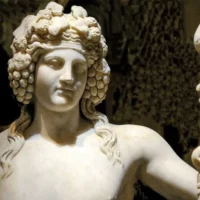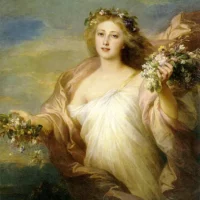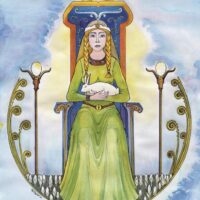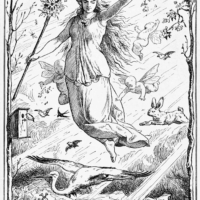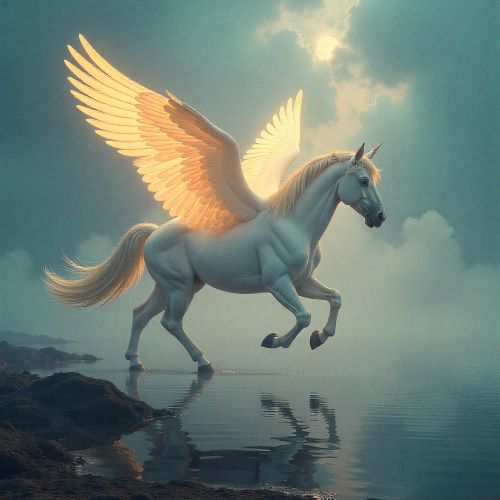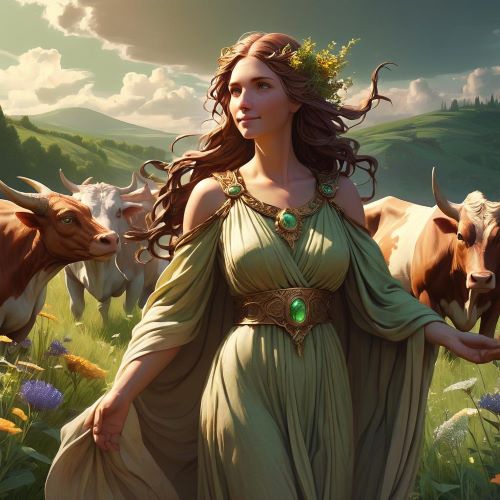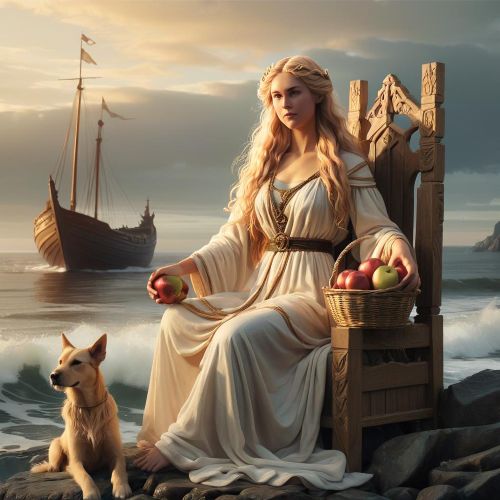Eostre : Goddess of Spring
Listen
At a glance
| Description | |
|---|---|
| Origin | Germanic Mythology |
| Classification | Gods |
| Family Members | N/A |
| Region | England |
| Associated With | Spring, Renewal |
Eostre
Introduction
Eostre, often linked with the rejuvenation of spring and the cycles of fertility, is a compelling figure in Germanic mythology. Though she only appears in one early medieval text—The Reckoning of Time by the Anglo-Saxon monk Bede—her legacy has blossomed in modern spirituality and popular culture. Bede mentions that the Anglo-Saxons named the month of April, or Ēosturmōnaþ, after her and celebrated it with springtime rituals. Linguistically, her name is rooted in the Proto-Germanic Austrō and the Proto-Indo-European root h₂ews-, both of which mean “to shine”—a nod to the dawn and renewal she represents. Despite a thin historical record, Eostre’s symbolic richness has allowed her to evolve into a widely recognized figure of rebirth, nature’s awakening, and the enduring hope of light returning after darkness.
Physical Traits
Unlike many ancient deities with detailed mythologies, Eostre lacks physical descriptions from early sources. As a result, much of her imagery has emerged from modern artistic interpretations. She is commonly envisioned as a youthful, luminous woman dressed in garments made of flowers and budding leaves, embodying the essence of spring itself. Her presence is often accompanied by animals and objects emblematic of fertility and life—hares, birds, and colorful eggs. Artists frequently portray her with long flowing hair, radiant like the early morning sun, and a peaceful expression that mirrors the gentle blossoming of nature. These visualizations are modern, yet they resonate deeply with Eostre’s associations with the dawn, growth, and new beginnings.
Family
Eostre is somewhat of a solitary figure in mythology, lacking any known familial relationships. Unlike other pantheons where deities exist in rich familial networks, Germanic sources do not provide genealogies or origin stories for her. However, scholars suggest she may be a localized representation of a broader Indo-European archetype—the dawn goddess. Her symbolic siblings might include goddesses like the Greek Eos, Roman Aurora, or Vedic Ushas, all of whom share attributes of light, renewal, and morning. This cross-cultural comparison suggests that while Eostre’s story remains untold in traditional genealogical terms, she belongs to a larger mythic heritage of light-bringing deities.
Other names
Eostre goes by many variants, each echoing through different linguistic traditions. In Old High German, she is called Ostara, a name that influenced the German word for Easter (Ostern). Proto-Germanic languages refer to her as Austrō, which stems from the dawn-rooted Indo-European h₂ews-. In Old English, her name appears as Ēastre or Eastre, reinforcing the idea that she was perceived as a personification of the rising sun and the east. While these names are not always attached to elaborate myths, their widespread usage reflects a reverence for her across early European cultures, particularly in relation to seasonal cycles and nature’s rebirth.
Powers and Abilities
As the goddess of spring, Eostre’s powers are intimately tied to natural transformation. She is said to herald the season of renewal, overseeing the melting of snow, the blooming of flowers, and the return of life to forests and fields. This power aligns with the symbolic elements often associated with her: the hare, a prolific symbol of fertility; and the egg, a universal emblem of life emerging from darkness. In modern folklore, Eostre is credited with the whimsical tale of turning a bird into a hare that could lay eggs, combining her themes of metamorphosis, magic, and fertility. More abstractly, her abilities include inspiring personal rebirth—many contemporary spiritual practitioners invoke her during the spring equinox as a guide for setting intentions, planting seeds (literal and metaphorical), and embracing new beginnings. She embodies cyclical power, light after darkness, and the gentle strength of growth.
Modern Day Influence
Though historical details about Eostre remain minimal, her influence permeates modern traditions and beliefs. The Christian celebration of Easter is thought to have adopted her name and seasonal timing, merging with existing spring fertility customs. The Easter Bunny and egg-decorating are often linked to older, possibly pagan, rites that honored fertility and the return of life—hallmarks of Eostre’s domain. Today, neopagan, Wiccan, and Druidic practitioners celebrate Ostara at the spring equinox, holding ceremonies that honor balance, fertility, and the greening of the earth. These rituals include planting seeds, crafting floral wreaths, and performing blessings to align with the earth’s renewal. Beyond religion, Eostre appears in books, visual arts, and television, representing archetypal themes of dawn, rebirth, and transformation. Neil Gaiman’s American Gods, for example, features her as a modern manifestation of ancient belief, suggesting how old deities survive in contemporary imagination. Through these adaptations, Eostre has transformed from a barely-documented deity into a potent cultural symbol of hope and cyclical renewal.
Related Images
Source
Bede. (725). The Reckoning of Time.
Grimm, J. (1835). Deutsche Mythologie.
Kroonen, G. (2013). Etymological Dictionary of Proto-Germanic.
Morris H. Lary. (2022). Eostre: The Mystery Goddess Who Gave Easter Its Name. https://historycooperative.org/eostre/
Heliodor Press. (2025). Ostara and the Goddess Eostre – Heliodor Press. https://www.heliodorpress.com/articles/eostre
Sarah Johnson. (2020). All About Eostre – The Pagan Goddess of Dawn – ARCANE ALCHEMY. http://www.arcane-alchemy.com/blog/2020/3/5/all-about-eostre-the-pagan-goddess-of-dawn
Ostara: Who is Ostara? – Northern Tradition Paganism. (2014). https://www.northernpaganism.org/shrines/ostara/about.html
Frequently Asked Questions
What is lorem Ipsum?
I am text block. Click edit button to change this text. Lorem ipsum dolor sit amet, consectetur adipiscing elit. Ut elit tellus, luctus nec ullamcorper mattis, pulvinar dapibus leo.
What is lorem Ipsum?
I am text block. Click edit button to change this text. Lorem ipsum dolor sit amet, consectetur adipiscing elit. Ut elit tellus, luctus nec ullamcorper mattis, pulvinar dapibus leo.
What is lorem Ipsum?
I am text block. Click edit button to change this text. Lorem ipsum dolor sit amet, consectetur adipiscing elit. Ut elit tellus, luctus nec ullamcorper mattis, pulvinar dapibus leo.
What is lorem Ipsum?
I am text block. Click edit button to change this text. Lorem ipsum dolor sit amet, consectetur adipiscing elit. Ut elit tellus, luctus nec ullamcorper mattis, pulvinar dapibus leo.
What is lorem Ipsum?
I am text block. Click edit button to change this text. Lorem ipsum dolor sit amet, consectetur adipiscing elit. Ut elit tellus, luctus nec ullamcorper mattis, pulvinar dapibus leo.



